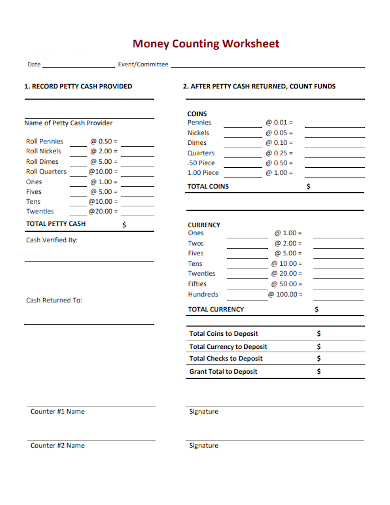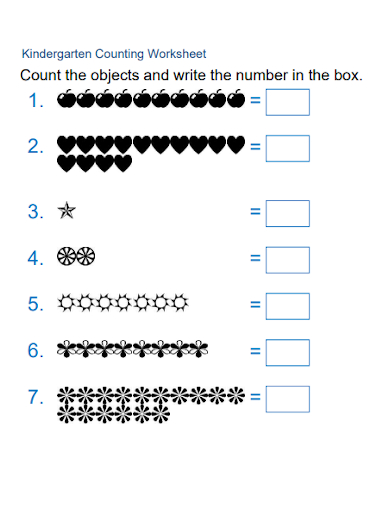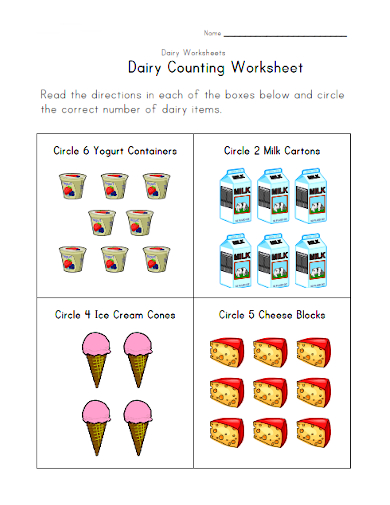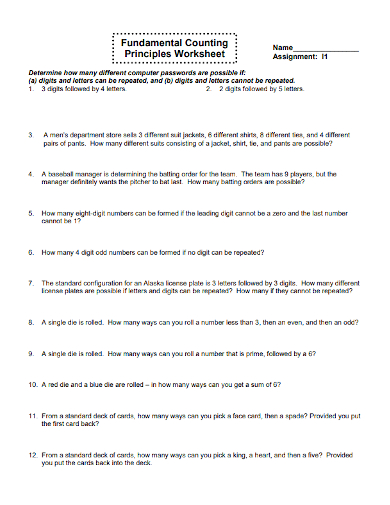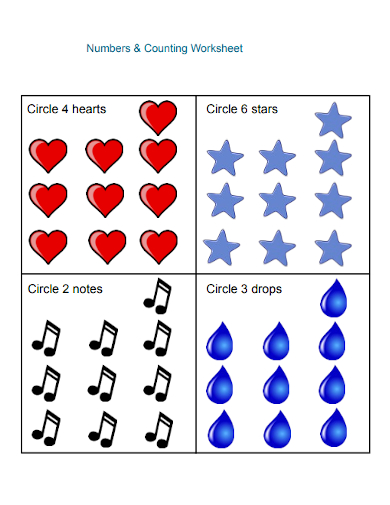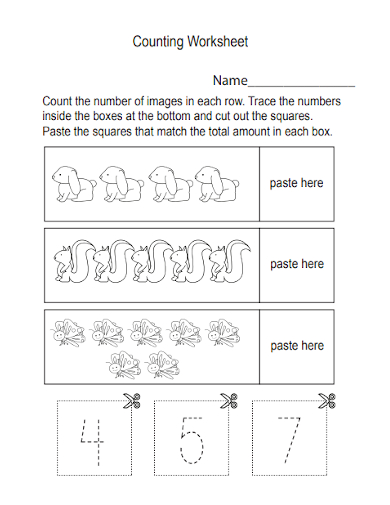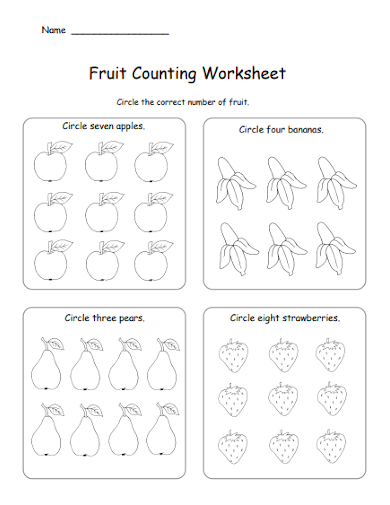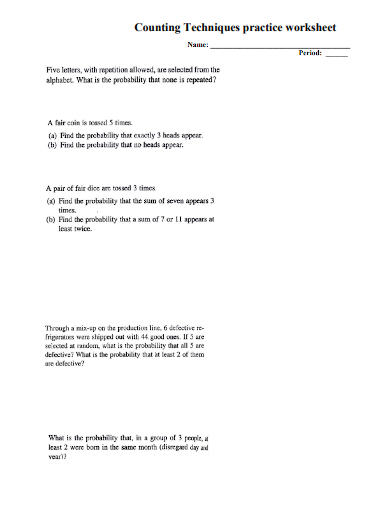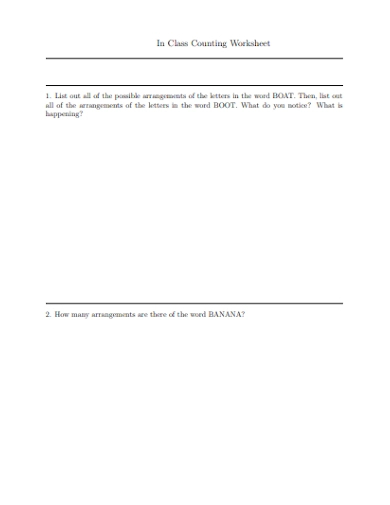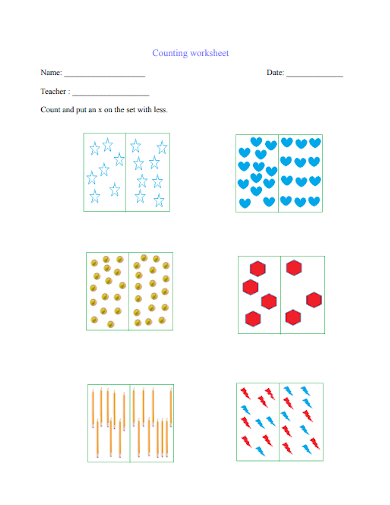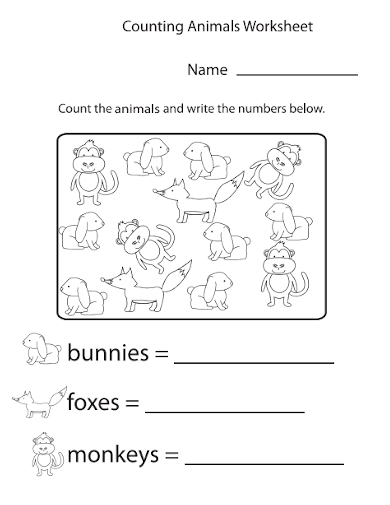Understanding numbers is an important skill that young children who are just starting in schools such as kindergartners need to master. Introducing numbers to kindergartners in a fun and interesting way will help them understand numbers easily and will help them learn other basic math concepts such as addition and subtraction that will be taught to them in the future. Teaching numbers to children is simple and fun especially when children are participating well. The challenge however is to keep their interest and motivation in learning numbers. The most basic way of introducing numbers to children is through counting. Letting them know how to count help them understand what numbers mean and how much is their quantity. If you’re teaching children to count, a worksheet can aid you in drilling and practicing counting activities with your pupils. This article will guide you on how to make a counting worksheet.
10+ Counting Worksheet Samples
1. Money Counting Worksheet
2. Kindergarten Counting Worksheet
3. Dairy Counting Worksheet
4. Fundamental Counting Principles Worksheet
5. Numbers & Counting Worksheet
6. Sample Counting Worksheet
7. Fruit Counting Worksheet
8. Counting Techniques Practice Worksheet
9. In Class Counting Worksheets
10. Basic Counting Worksheet
11. Counting Animals Worksheet
How to Teach Numbers to Preschoolers
1. Use Number Rhymes
Using rhymes and songs is a fun and creative way of learning numbers for young pupils who are just learning how to count. Use number songs and rhymes and show the numbers on your fingers as you sing together with the children. This will help them know what particular number relates to a certain number of fingers.
2. Include Numbers in Daily Tasks
Use numbers in daily tasks that your pupils will do with you. For example, you can let them count objects to connect numbers with quantities.
3. Play Number Games
Kids learn better when they are playing with each other. Encourage healthy competition in the group to motivate them, too. Get them to sit in a circle and take turns counting numbers.
4. Make Use of Flash Cards
Make flashcards with numbers zero to nine and use these to play various number games with your pupils.
How to Make a Counting Worksheet
1. Decide What Template You Will Use
Before creating your worksheet, decide what worksheet template you will use. It’s up to you how you will design your worksheet by looking for specific templates on the internet that you want to use. You can also make use of the sample worksheet templates provided above. You can also create your template from a blank canvas. You have the freedom to design the platform, task, aesthetic, mood, or color of your worksheet.
2. Personalize the Worksheet
You can decide what font to use in your worksheet. To make your worksheet more enticing and interesting for your pupils, add cute and colorful images or animated clipart. Children usually learn better visually so include more images that relate to the questions and activities you put in the worksheet.
3. Resize Your Worksheet for Printing
Write down the content of your worksheet. Once you’re done, adjust all the items in the worksheet to make it look organized. If you’re done creating the worksheet, it’s time to print it. Make sure to modify the size of the worksheet in your Word processor that will fit the paper you will use to print it. Ensure that the format won’t get destroyed once the worksheet is printed. If it happens, adjust the margins until it fits the paper.
4. Share the Worksheet With Your Pupils
Once you’ve printed your worksheets, don’t forget to make multiple copies of them and distribute them to your pupils individually so they can practice their counting skills.
FAQs
What are counting skills?
Counting skills is the ability to know words and symbols, number word sequence skills, and enumeration.
Why are counting activities important?
Doing counting activities is important because it is the main conceptual idea on which all other number concepts are based.
What are examples of counting activities?
There are countless counting activities that children can do to improve their skills. Below is a list of some counting activities you can do with children:
- Counting Money: Count quarters, nickels, dimes, and pennies.
- Dot-to-Dot Puzzles: Connect the dots to make pictures with basic counting and skip counting worksheets.
- Skip Counting: Practice skip counting by 2s, 3s, 4s, 5s, and sp on.
- Counting Backwards: Practice reverse counting from the number 10 or 20.
When teaching counting lessons to your pupils, remember that children tend to get distracted easily so keep the lessons short but at the same time look for opportunities to sneak in counting whenever possible without overdoing it. If the children don’t t immediately pick up on the task, don’t get discouraged right away. Each child has their own learning pace. Instead, focus on their weakness and try to address them in a way that will help them understand numbers more. Since children tend to memorize numbers, help them understand their function by relating each quantity of the number with everyday objects. To help you get started making the worksheet, download our free sample templates above to use as your guide!
Related Posts
FREE 14+ Feedback Worksheet Samples in PDF | MS Word
FREE 20+ Goal Setting Worksheet Samples in MS Word | Google Docs | Pages | Excel | Google Sheets | Numbers | PPT | PDF
FREE 30+ Cost Worksheet Samples in Google Docs | Google Sheets | MS Excel | MS Word | Apple Numbers | Apple Pages | PDF
FREE 50+ Assessment Worksheet Samples in PDF | MS Word
FREE 25+ Campaign Worksheet Samples in PDF
FREE 50+ Application Worksheet Samples in PDF | MS Word
FREE 10+ Distribution Worksheet Samples in PDF
FREE 10+ Family Worksheet Samples in PDF
FREE 10+ Personal Worksheet Samples in PDF
FREE 7+ Depreciation Worksheet Samples & Templates in PDF | MS Word
FREE 10+ Typing Worksheets Samples in PDF | DOC
FREE 10+ Maths Worksheets Samples in PDF | DOC
FREE 10+ 4th grade Worksheets Samples in PDF
FREE 10+ Weekly Budget Worksheet Samples in MS Word | MS Excel | Google Docs | Google Sheets | PDF
FREE 10+ Expense Worksheet Samples in PDF

